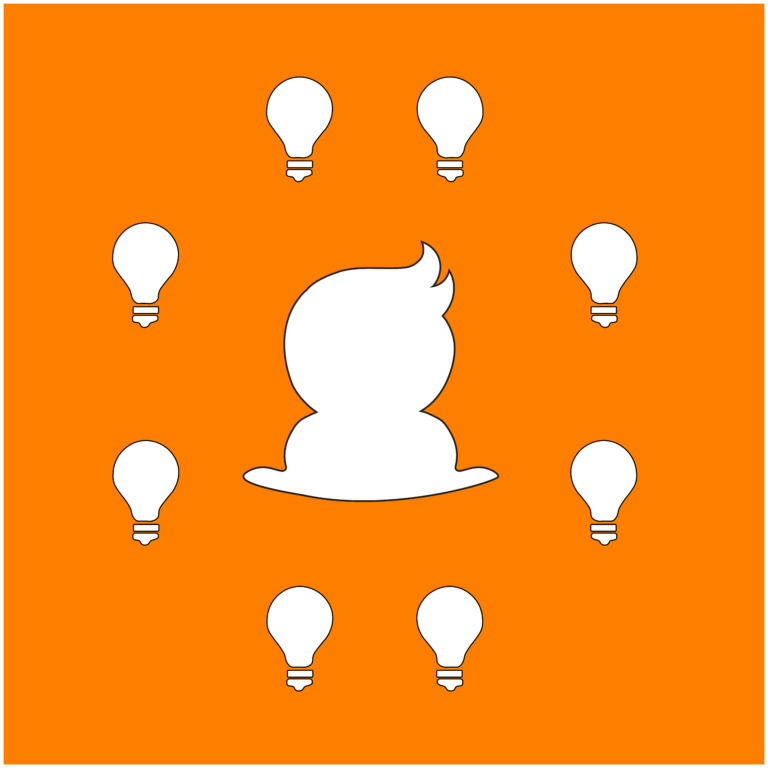The top 5 struggles in the Design Thinking process

Written by Anderson Niu
June 1st, 2020
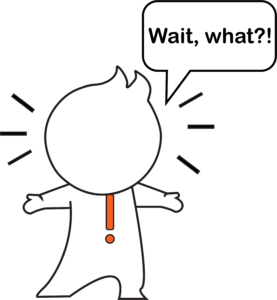
Are you willing to start a new project, but struggling to implement it?
Let me tell you one thing: you are not alone.
Even if you don’t see yourself as a creative person (yet), I want you to remember that everybody has potential to be creative. It just requires training, and we can help you with that. That’s why we are here. 😊
Being a creative person comes with a plethora of challenges regardless of how you use your creativity. Whether it is for leisure or professional goals, there are many struggles that you might come across throughout your journey.
The Design Thinking process is used to solve complex problems by tackling the situation in different angles. In short, it applies the same creative process that designers use, and it involves 5 stages:
1- Empathize – Familiarizing yourself with your idea or its audience’s needs
2 – Define – Determining what is the problem / solution
3 – Ideate – Generating ideas and planning the steps
4 – Prototype – Executing the plan
5 – Test – Assessing the effectiveness of the project
Here I bring the top 5 struggles you may have during the Design Thinking process.
1) EMPATHIZE – When you are trying to figure things out
Deciding what, where, who, when, and why
On the first stage of the creative process, we try to understand the problem we want to fix. At this point, we look for ideas, references, or anything that can help us to gather information and get started.
Creative people find it easy to come up with ideas, but extremely hard to put them together and make a plan. That’s why we need some extra support on the early stages of a project. As doing everything alone is not efficient, the options are:
– Do it all by yourself, but slow and steady – The safest way, but it takes too long to execute.
– Hire someone – It is likely to be the fastest way, but it might requires some unaffordable investments.
– Ask for help – The cheapest way, but, if asked to the wrong people, it might slow you down or cause more harm than good.
According to previous experiences, combined with some social experiments I have run over the past 2 years, I noticed that:
- Over 70% of the individuals surveyed preferred to start asking for help before spending any money on their endeavor.
- Highly creative individuals are normally overconfident and tend to start their journey by doing most of the job alone.
- Only 15% of the participants mentioned to be willing to start by hiring professionals.
In one of my experiments, the participants were asked to perform a task that had potential to be systematized. The intention was to analyze if they would whether keep trying the same approach or change it during the experiment. At the end of 10 consecutive trials, they were asked some self-evaluation questions, such as the following:
“why do you think you chose to maintain your approach instead of trying another one?”
- 60% answered that they wanted to check if the problem was the procedure itself or the way they applied it.
- 75% of those 60% mentioned above stated that they were worried of trying something different because of the deadline.
Those who don’t see themselves as creative individuals usually prefer to stay in their comfort zone. As a result, they tend to maintain their initial approach when they achieve a positive short-term result. After the first positive outcome, even though they fail, they insist on the same procedure instead of trying something new. Simply put, they are not very fond of surprises.
Creative or not, sooner or later we all realize that there are better ways to be more efficient and effective. When this time comes, we start looking for help to either accelerate our projects or to check for approval.
…What? You want to be part of an experiment too? Awesome! Let me know in the comments below how many of you want to participate.
2) DEFINE – While defining the problem or the solution.
Finding the right people to ask for help
People have different ways of thinking, and that affects how they see the world as well as how they connect the information they receive. Creative people tend to make multiple connections with their surroundings and easily create new ideas.
Sometimes, however, it is hard to find people who think like us, especially when we need some insights for a new project. If you ever experienced this, you probably had a great idea but not enough help to develop it completely. Maybe that lack of support gave you some great motivation to move on, or maybe it went the other way around making you procrastinating to put your idea into action.
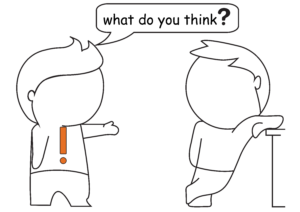 _ Hey there… I need your help with this idea I have. It’s a new app that will help students to…
_ Hey there… I need your help with this idea I have. It’s a new app that will help students to…
_ Oh… don’t bother asking me about it. It’s not my area. I can’t help you.
_ What do you think about this option? Which color is better?
_ I don’t know. I am not your target. Go ask them.
Sometimes it is hard to find the right people to help with your ideas, isn’t it?
How many times have you encountered people that instead of TRYING to help you with some extra ideas, thoughts, or even constructive insights, they come with loads of DESTRUCTIVE comments like “why are you doing this? People are not…”, or “this is not gonna work”, etc.
I know, I know… Calm down ok?
The key is to find people that have a similar way of thinking. Not everyone has the natural ability to connect information with ease as you might have, so try to avoid asking advice to those who consistently deny to help you, especially if they are close to you, such as relatives, your spouse, or close friends. Instead, try to find people who took a similar path that you are willing to take, and ask them for help because they will have more meaningful an honest advice.
If you are starting a new project, it is important to remember that you need help from those who understand your vision and/or are willing to help you to develop your insights
to move FORWARD. Avoid all advice that goes against these two principles. They will keep you focused on what is really important: Your ideas becoming real.
3) IDEATE – When you are trying to come up with new ideas
“Creative Block” = “That-which-must-not-be-mentioned” (shhhh! Don’t say it out loud!)
Creative blo… (ops. Sorry) “that-which-must-not-be-mentioned” is a problem that affects everybody. The difference is in what you do to avoid it and how you manage the problem.

For those who are still not very creative, they prevent it by working with familiar systems and manage the problem by creating a routine.
Highly creative people, for instance, tend to avoid “you-know-what” by creating a routine that involves brainstorming or learning something about the subject; moreover, they usually explore new fields to manage the lack of ideas and force some new connections.
In general, the best way to avoid “you-know-what” is to keep working with familiar systems until a routine or a procedure can be created for it. Then, gradually seek for new knowledge related to the subject until you understand its patterns and main features.
Let’s use DANCE as our main example, and also as a metaphor, for your project ok?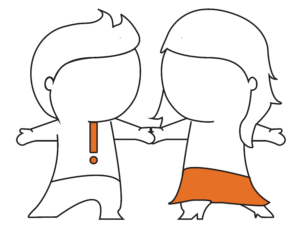
Let’s say that you just learned how to dance Salsa. You want to do something different, but you feel stuck on the 3 only steps that you have learned so far. Every single time that you practice, you only perform those 3 steps following the same order. You are feeling stuck on the loop and you want to try something new, but you don’t know what to do.
Phase 1:
First, forget about learning new steps for a while. Instead, focus first on listening some Salsa songs and try to notice some patterns in this music style, such as their compass, their rhythm, or even how people dance the songs you like.
Phase 2:
The next move is to try to implement something different on one of the 3 steps that you already know and practice it until it becomes easy and natural to you. It could be a small kick between step 1 and step 2, a gesture with your head or arms, performing the step slowly, or even some sexy move (ooooh).
Phase 3:
Once you get familiar with the first change, you can either try the same approach for the second step that you know or you can play around with the order of the steps. How about trying the sequence “step 1-3-2”? What about starting with step 2 and move to step 1? Eventually, you will discover a variety of combinations of moves to compose your dance.
After working with the composition, try to implement some variations of them. If the step 3 is a little jump, why not bending instead of jumping? Maybe doing it slowly or standing still while raising your arms with a majestic gesture.
Last phase:
Now, if you want to create a new dance style, try to create a routine of practicing steps of different dance styles. Try to be curious enough to challenge yourself to learn tango, samba, salsa, bachata, zouk, forró, and all other rhythms that you can imagine. The purpose is not to become an expert in all of them, but to expand your knowledge in dancing. They all have something in common, so your time invested on them will be meaningful for your creative process. You will have infinite combinations of steps to study and apply later.
Regardless of how many steps you learn throughout your journey, in the end, it’s not how many steps you know, yet how you use those steps to make the dance look beautiful and pleasant for you, your partner, and the audience. 😊
4) PROTOTYPE – While executing your idea
High expectations
When it comes to make predictions or getting yourself ready for a possible outcome, it is important to consider different scenarios for the results you are expecting. Take a hotels as an example. Hotels have a high fluctuation on their occupancy throughout the year; therefore, they must consider some different scenarios to help them to control their yearly expenses.
Let’s use a hotel with 100 units located in downtown in your city as our example ok?
– Realistic scenario:
Usually supported by market researches and surveys, the realistic scenario shows trends and an average of the results we seek.
o A realistic scenario for our hotel could be around 50% – 70% of its rooms being used all over the year. Maybe a little more during winter or summer depending on the region of our hotel.
– Pessimistic scenario:
After understanding the realistic scenario, now it’s time to analyze the two possible extremist results. The pessimistic scenario is usually considered by our “little devil on our shoulders” telling us that something in our plan is going to fail. The real question we should be asking when analyzing this scenario is: am I ready to deal with it?
o The pessimistic scenario could be an average of only 10% of occupancy during the whole year. Too extreme? Ok… 40% of occupied rooms during the Summer. Happy now?
– Optimistic scenario:
The paradise that everyone wants to be in. The optimistic scenario illustrates how things would be if everything goes as planned PLUS a little pinch (maybe a lot) of LUCK to spice up the results.
o Let’s say that our hotel gets 80% – 100% of occupancy over the whole year, with ALL clients giving an average of 4.9 – 5 stars reviews and also recommending the hotel to others in social media with only positive comments.
So many creative guys truly believe that they are geniuses and, due to that fact, their ideas should be recognized right away. The problem is how fast they expect to have such recognition, which turns out to be a very short-term expectation.
Unfortunately, most creative folks love so much their ideas that they end up ignoring the fact that not everyone is going to see their creation with the same eyes.
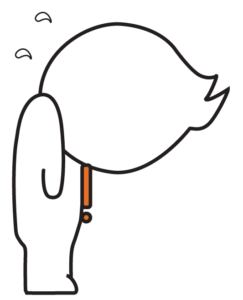 Creative minds tend to spend most of their time focusing only on the optimistic scenario instead of preparing themselves (at least emotionally) to deal with some negative outcomes of their work. Because of such high expectation, most of them feel embarrassed when they don’t receive the praise and recognition that they expected. Sometimes, criticism takes place of compliments, and some innovators out there are not ready to take in any kind of criticism, which may eventually break them.
Creative minds tend to spend most of their time focusing only on the optimistic scenario instead of preparing themselves (at least emotionally) to deal with some negative outcomes of their work. Because of such high expectation, most of them feel embarrassed when they don’t receive the praise and recognition that they expected. Sometimes, criticism takes place of compliments, and some innovators out there are not ready to take in any kind of criticism, which may eventually break them.
There are of course some other examples regarding problems with high expectations, but creative people also struggle with the prevention of it. Some struggle with their perfectionism to create excessive planning to prevent ALL possible failures, others give up and change their focus to another project just to avoid the problem. The result of those behaviors is procrastination, and we have all been there before, haven’t we? I am sure that you don’t want to be there anymore. 😊
If you are going through some of these problems with your ideas, let us know in the comments below.
5) TEST – When you are about to try your idea
Realizing that your idea is not THAT innovative after all
 “A HA! What an amazing idea! Let me start drawing and planning it.”
“A HA! What an amazing idea! Let me start drawing and planning it.”
… after an arduous week developing the plan, …
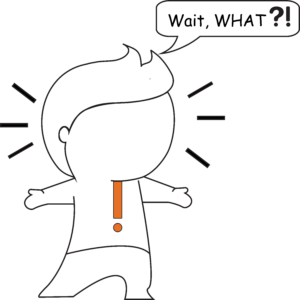
“Oh… I just found this website and I didn’t know that my idea already existed. Silly me to think that putting a camera on a small device with propellers would be an innovative breakthrough! It took me a week to build a prototype, and I also gave a name to my invention! Now I realized that people already know it as “drones”! You know what, I’m not going to continue this project. The big companies already dominate its market, and I won’t have the patent of it anyway. I would rather start something new.”
If you are a highly creative person, you probably have come across a similar problem sometime in your life. Even though it might work as a booster for someone’s motivation, for others it might be a reason to quit and give up.
Innovators love to try new things, and we love to visualize how that idea would be in the future. When we see similar ideas already in an advanced level, we tend to compare our actual work with those that are already done, and that can be scary. In fact, don’t think that this is just for profitable ideas. The hole is much deeper than that.
Yes. I am talking about personal comparison too, and social media is nowadays the hottest spot of this problem. Take Instagram for example, people tend to compare themselves in the platform with others who are WAAAAY ahead in terms of popularity and engagement with their audience. This behavior breaks many people by making them feel discouraged.
So just remember to not compare your work with others, enjoy your own journey, and to believe in your potential as a creator. Even if you created something that already exists, think about it this way:
1- Don’t ignore that idea. Take notes and keep them safe somewhere. Maybe they can be useful one day.
2- If you didn’t know that your idea existed before, you have indeed made a breakthrough because you noticed something that is really acceptable and solves people’s problems. Be proud of yourself for that.
Did you like this article? Your feedback is very important to us.
Write in the comments below what is the most common struggle you have with your ideas and share this article with a friend who needs to read this.


